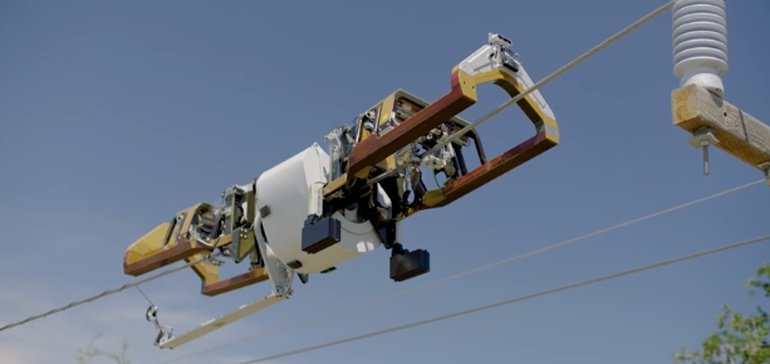Mobile App Development, SEO, Social Media, Uncategorized, Web Development, Website Design
Facebook Outlines Advances in Connectivity, as it Works to Connect the Next Billion Users
- By Brett Belau
08 Oct

Despite reaching ubiquitous levels in many regions, Facebook continues to add more users every quarter, which, considering the app has now been around from 17 years, is pretty amazing to see.
But there is a key trend to note within this. As you can see in the above DAU chart from Facebook’s most recent earnings report, the platform’s usage in the US and Europe has remained relatively stagnant for some time. The vast majority of Facebook’s growth is now coming from developing regions, like India and Indonesia, and often via people who are coming online for the very first time. So despite western nations having already adapted social media into our everyday routines, Facebook is still a new thing for billions of others, and it’s still adapting in order to maximize its appeal to these users, in various ways.
The more new users Facebook can add, the more it can utilize the lessons that it’s learned in other regions to make its platform more sticky, and a bigger part of more societies, and economies.
Which, of course, comes with its own concerns – but given the focus on growth, both from Facebook and its shareholders, it makes sense for the company to be investing in new ways to reach more people, which also provides increased connectivity, and potential in other ways, outside of the platform itself.
Which is why the latest projects from Facebook’s Connectivity group are so interesting. As part of its recent “Inside the Lab” event, Facebook Connectivity outlined three specific projects which it’s using to connect more regions, and facilitate more Facebook usage around the world.
The first element is its investment in subsea cabling, with Facebook putting $1 billion into the 2Africa project, which, when completed, will be the longest subsea cable system in the world connecting Africa, Europe and Asia.

As you can see in this diagram, the 2Africa cabling project was recently expanded to also link India, Pakistan, Iraq and Saudi Arabia into the project, improving connection into more regions.
The entire project is a jointly-funded initiative, with a primary focus on connecting more African regions into high-speed, reliable internet.
And as that happens, that will provide new pathways for Facebook to reach whole new communities, where it can also pitch its evolving eCommerce and business connection tools to boost its utility.
Which is really where Facebook can win out. By reaching into these regions, often before other social media providers have a chance to promote their apps, or focus on growth, Facebook can then become an essential part of the web experience, with its infrastructure then forming the foundations of new digital economies, expanding the company’s potential in each nation.
And while part-funding such projects doesn’t necessarily guarantee that Facebook will see broader adoption in these new areas, based on its popularity in every other nation, it’s fairly safe to assume that Facebook will catch on – and as it does, that will see it continue to add millions, and potentially billions more users, facilitating business growth.
Facebook’s second major connectivity project of focus is a new cabling robot called ‘Bombyx’, which is able to move along powerlines and wrap them with fiber cable.
That can save significant time, effort and cost in facilitating connection to many regions, utilizing existing infrastructure to maximize internet cabling, and bring more remote regions online.
Finally, Facebook also continues to evolve its Terragraph technology, which facilitates wireless connectivity at fiber speed over the air.

Facebook’s been working on Terragraph for years, and while some of its other wireless connectivity initiatives have fallen short (like its Aquila drone project), this one is showing significant promise:
“[Terragraph] has already brought high-speed internet to more than 6,500 homes in Anchorage, Alaska, and deployment has also started in Perth, Australia, one of the most isolated capital cities in the world.”
From a broader perspective, Facebook’s connectivity initiatives serve a greater purpose, in connecting the world to the internet, which democratizes information, and will become even more essential as we shift into the next digital age. But at the same time, the direct benefits for Facebook are clear, with more users able to utilize even more Facebook tools over time, including Instagram, and soon AR glasses.
It also, as noted, gives Facebook first-mover advantage in many regions, which further helps to expand its user base.
Of course, for most advertisers, you’ll have a specific market focus, so Facebook’s global expansion won’t mean a lot. But for Facebook’s broader business, facilitating whole new ad eco-systems and business tools is a major element, which will help the platform counter slowing growth in its core markets, and become a more essential tool for even more people.
You can read more about Facebook’s connectivity projects here.
Source: www.socialmediatoday.com, originally published on 2021-10-07 17:53:34
Connect with B2 Web Studios
Get B2 news, tips and the latest trends on web, mobile and digital marketing
- Appleton/Green Bay (HQ): (920) 358-0305
- Las Vegas, NV (Satellite): (702) 659-7809
- Email Us: [email protected]

© Copyright 2002 – 2022 B2 Web Studios, a division of B2 Computing LLC. All rights reserved. All logos trademarks of their respective owners. Privacy Policy

![How to Successfully Use Social Media: A Small Business Guide for Beginners [Infographic]](https://b2webstudios.com/storage/2023/02/How-to-Successfully-Use-Social-Media-A-Small-Business-Guide-85x70.jpg)



![How to Successfully Use Social Media: A Small Business Guide for Beginners [Infographic]](https://b2webstudios.com/storage/2023/02/How-to-Successfully-Use-Social-Media-A-Small-Business-Guide-300x169.jpg)


Recent Comments